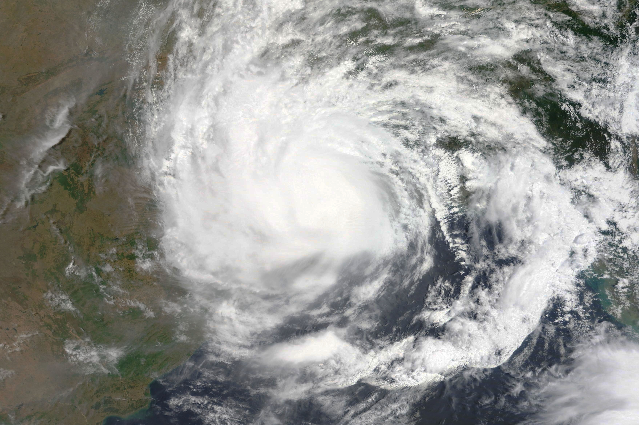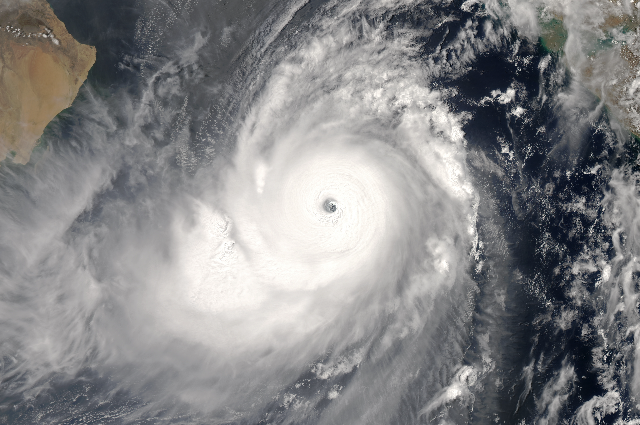
Recently, the cyclone Yaas smashed the north-eastern region of India. Heavy rains and violent winds were lashing this region in the midst of the COVID-19 pandemic. The National Disaster Response Force (NDRF) team rescued numerous people in these events. This cyclone destroyed tens of thousands of houses and forced lakhs of people to seek safe shelter.
The Indian Meteorological Department (IMD) classified Yaas as a very severe cyclonic storm. However, the Yaas cyclone is the second super cyclone to hit India, and earlier, the ferocious cyclone to hit West Bengal in the last 100 years was cyclone Amphan, which took 80 lives and made thousands homeless. Cyclone currents have been forecasted in many regions of north-eastern India. Several experts have also said that cyclones are becoming more frequent and severe in the northern Indian ocean. In recent times, our understanding of tropical cyclones developed quickly because these phenomena occur relatively often now. After some recent cyclones like Yaas and Taukate, the next cyclonic storm coming out of the Indian Ocean will be named Gulaab.

Source: twitter.com/Indiametdept
For the last few years, some devastating cyclones have become a regular matter in north-eastern India. Every year, many cyclones develop and sustain in the Northern Indian Ocean to hit the coastal boundaries of India, Bangladesh, Sri Lanka, and a few neighboring countries. The Bay of Bengal, which is situated in the north-eastern region of the Indian ocean is the largest in the world to have around 500 million people staying close to the coastal region.
The coastal areas have come under the wrath of cyclones like Amphan, Nisarga, Taukate, and the recent Yaas. These massive and destructive cyclones are wind storms accompanied by heavy rainfall at low-pressure areas. All the tropical cyclones are familiar to most people because they often arise across tropical regions. They are triggered due to a constant course of rising hot air over the ocean surface. This unfilled space is then engaged by the cool air around, which further heats up and rises. All the cyclones are centered on areas of low atmospheric pressure, usually over warm ocean waters near the equator. The warm moist air over the ocean rises from the surface in the upward direction, resulting in the formation of the low-pressure zone over the surface. However, these warm oceans are now overheating, and some new studies are indicating that global warming is causing overheated oceans and they are increasing the regularity of cyclones.
A journal published in the Current Science, in collaboration with the Indian Academy of Sciences has stated that there has been a two-fold increase in the tropical cyclone frequency over the Bay of Bengal. There has been a 17% rise in the intensification rate of cyclonic disturbance to the cyclone stage, and a 25% rise to severe cyclone stage over the North Indian Ocean during November, which accounts for the highest monthly average of severe cyclone frequency. And all the linear trends are statically significant at the 99% level. The growing movement in the cyclone frequency during May is also highly vital but the increase rates to cyclone and severe cyclone stages have registered only slight increasing tendencies.

Source: commons.wikimedia.org
The lead author of the Intergovernmental Panel on Climate Change (IPCC) Oceans and Cryosphere and Scientist Rocky Matthew Koll with the Indian Institute of Tropical Meteorology suggested that, in the case of both recently occurred cyclones like Amphan and Nisarga, the anomalously warm ocean temperatures are showing to give them a major boost. The ocean temperature has enlarged as a result of growing heat and there has been a global rise in the observed intensity of the strongest storms over recent times.
Increased events of tropical cyclones indicate the overall effect of the warming of the ocean. Anjal Prakash, who is the research director of Bharti Institute of Public Policy of Indian School of Business’s and one of the authors of the Ocean and Cryosphere in Climate Change, a special report of the IPCC, has explained that these cyclones are due to ocean heat waves and warming up of oceans. An increase in the tropical winds, rainfall, and extreme waves combined with the relative sea levels, and coastal threats are all the indications of these increasing tropical cyclones in the north-eastern region in India.
Several studies have found that the strength of cyclones affecting India’s north-eastern region has been increasing as the planet has warmed. Climate change is enhancing the danger from cyclones in many ways. And not only in northern India, but some strongest cyclones have become more common around the world and experts indicate that massive climate change will continue to make the cyclones more usual and dangerous.
____________________________________________
Reference:
- www.jstor.org
- www.mausam.imd.gov.in
- www.odishatv.in
- www.archive.ipcc.ch
